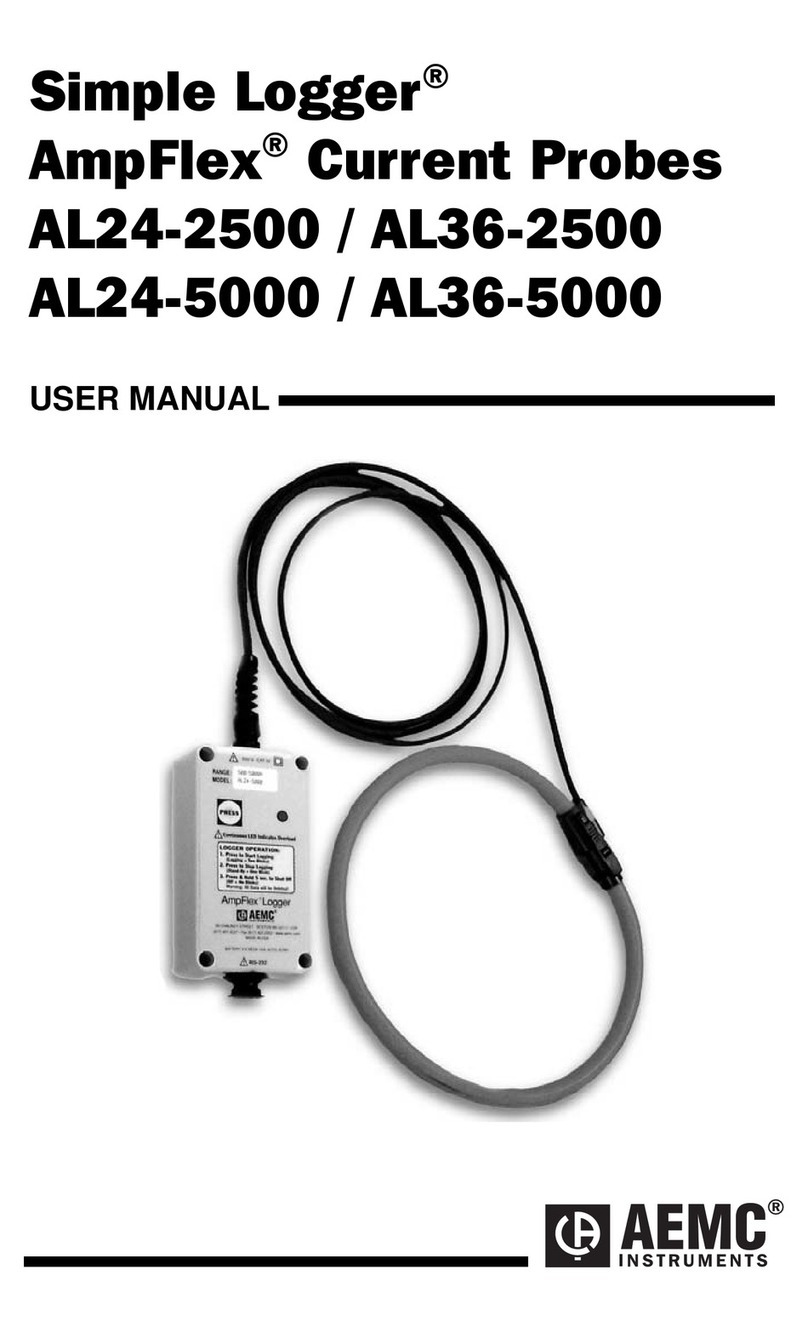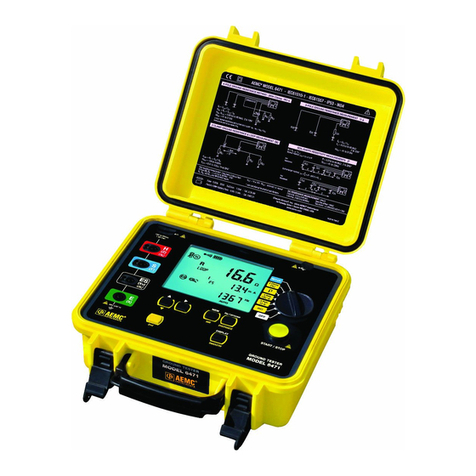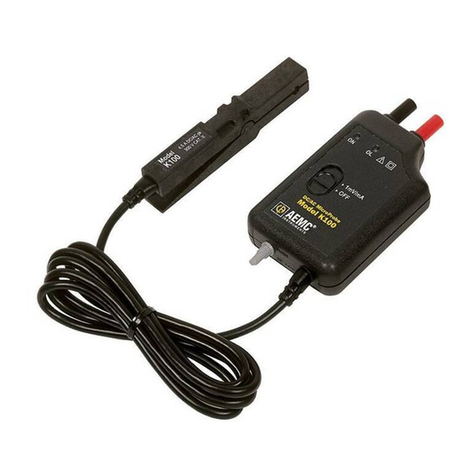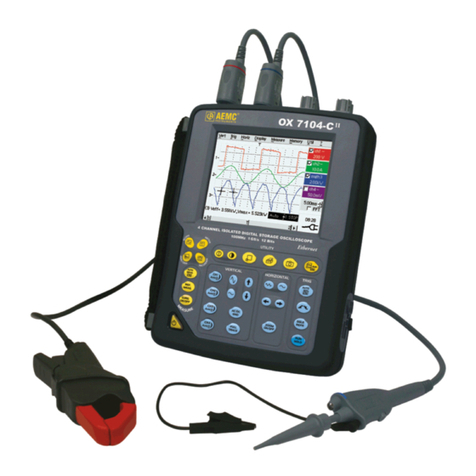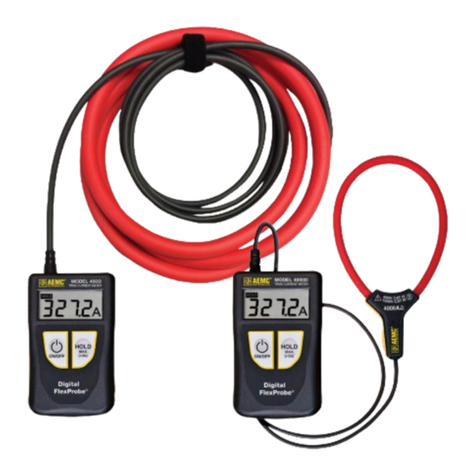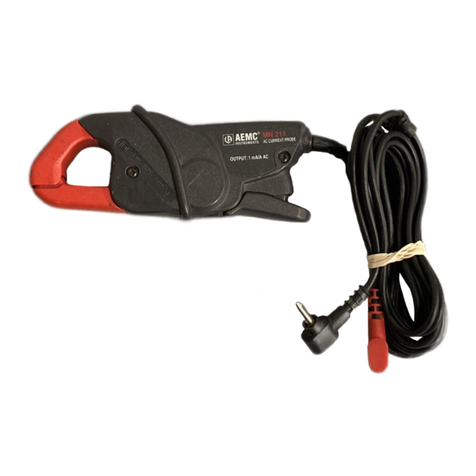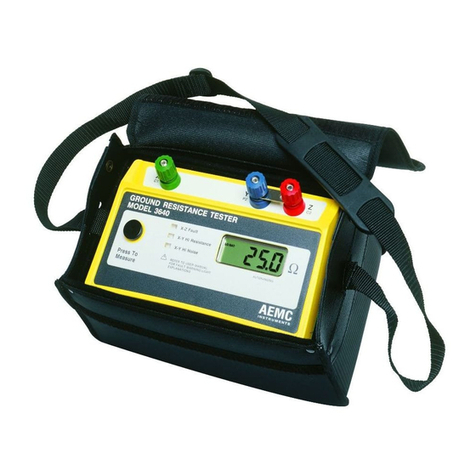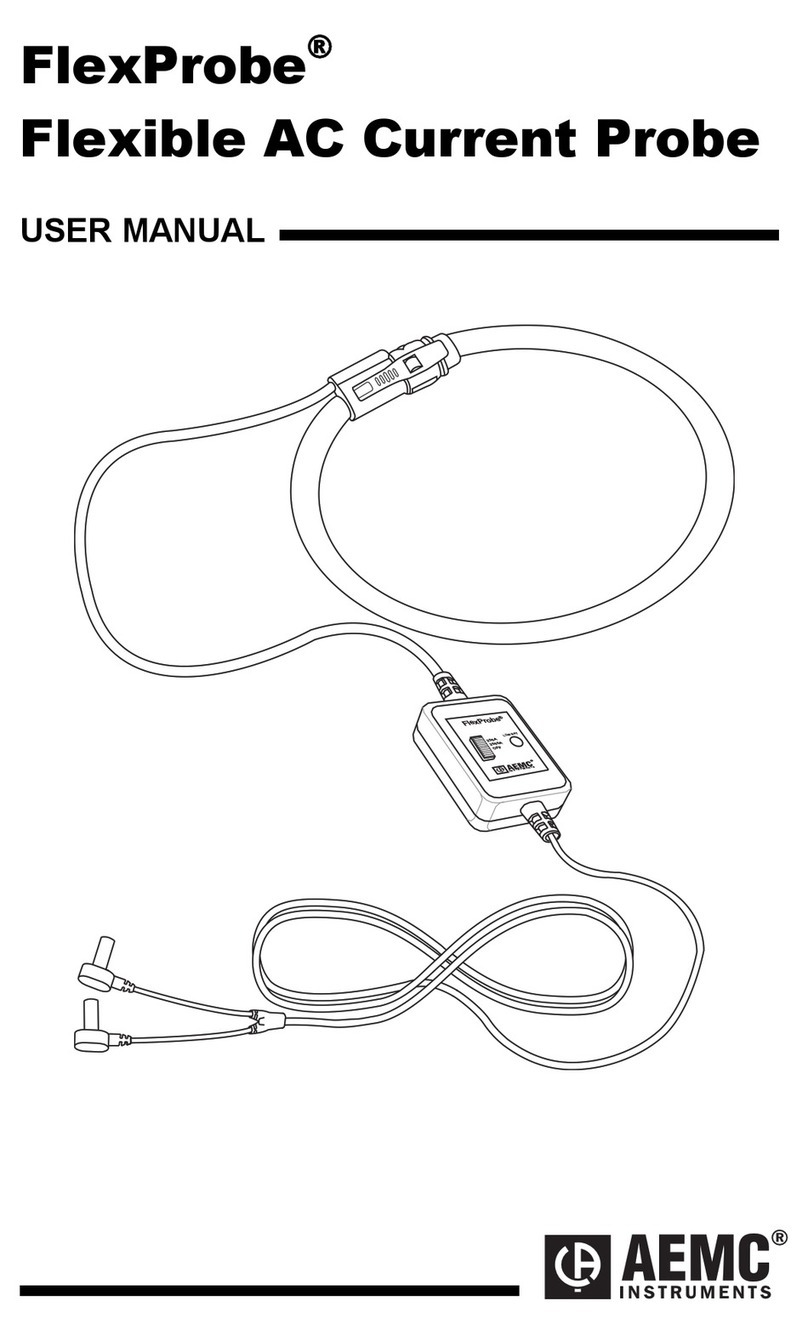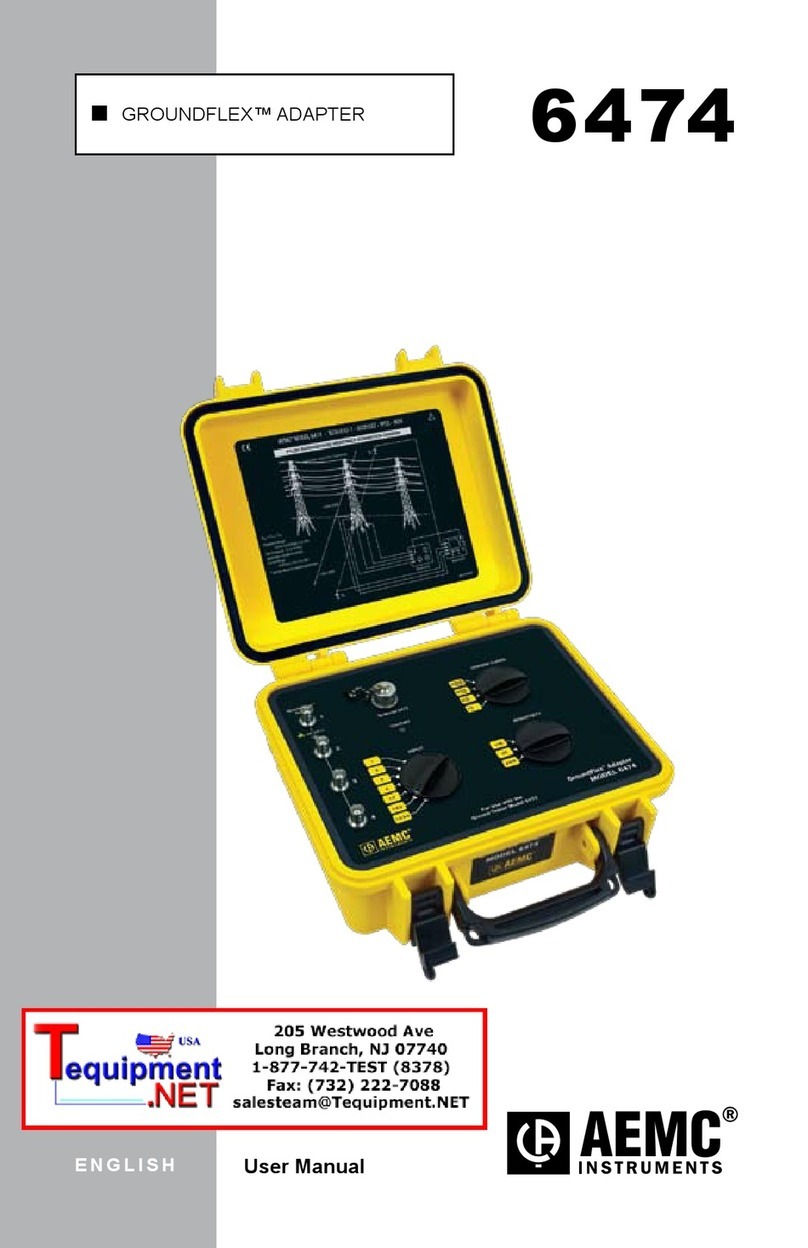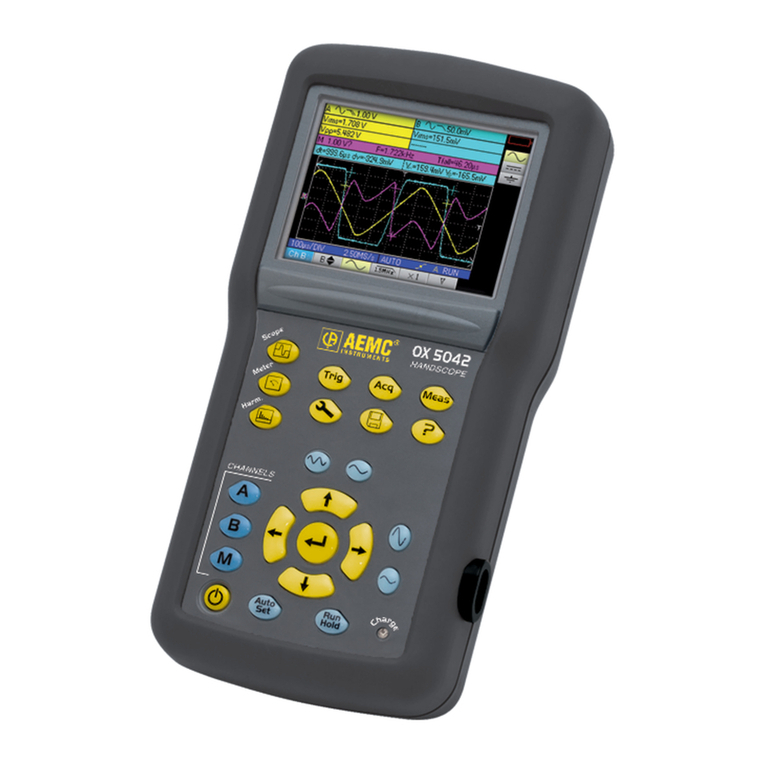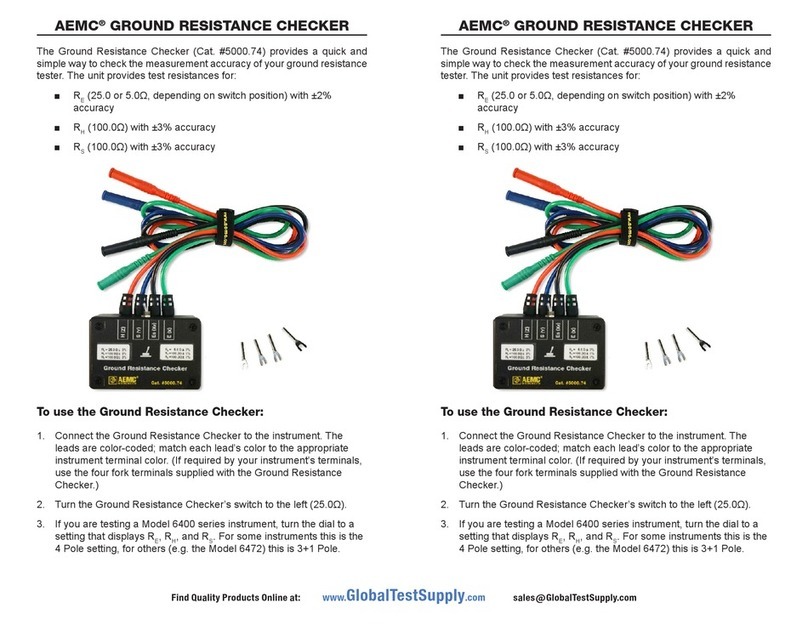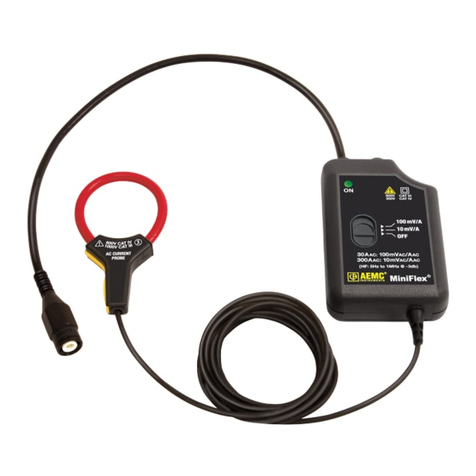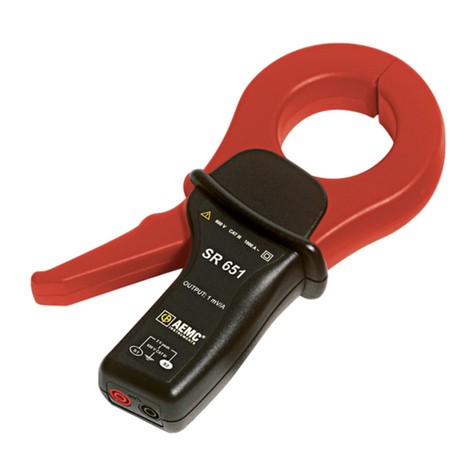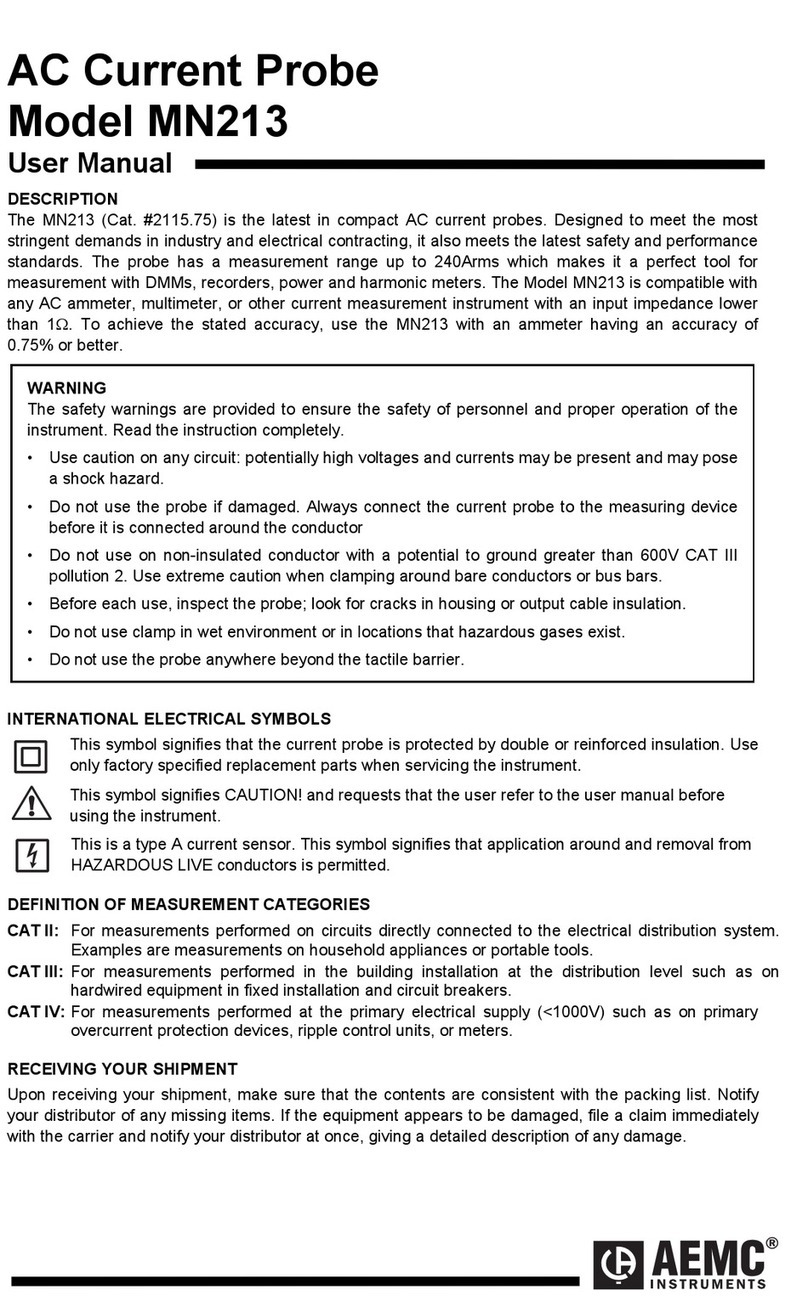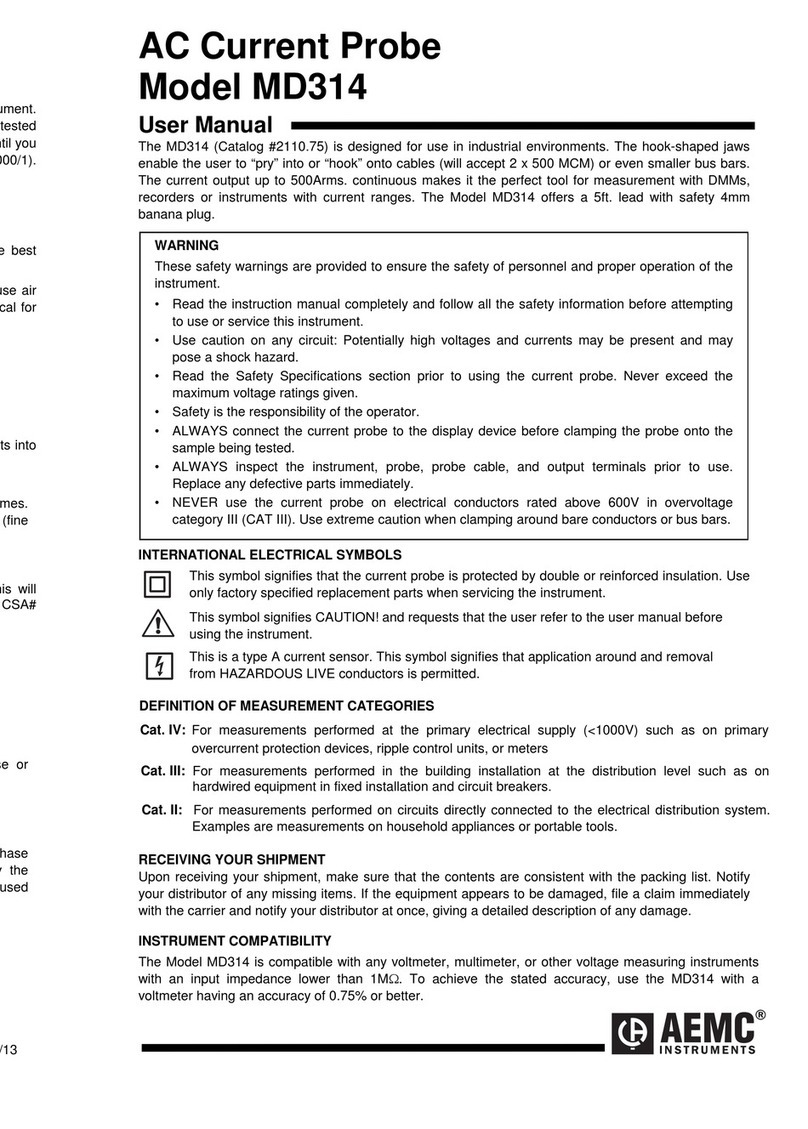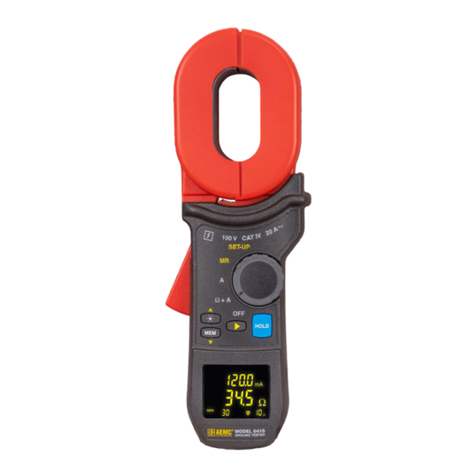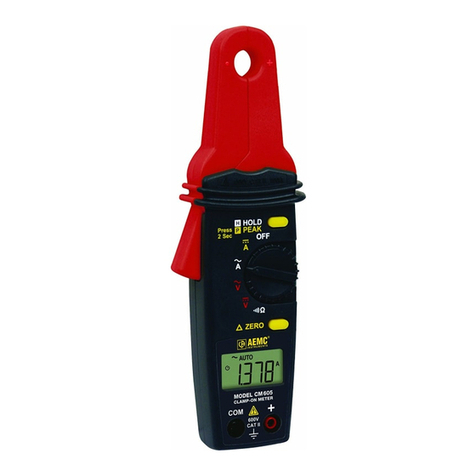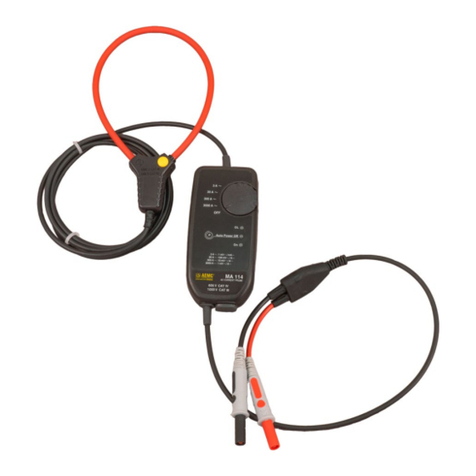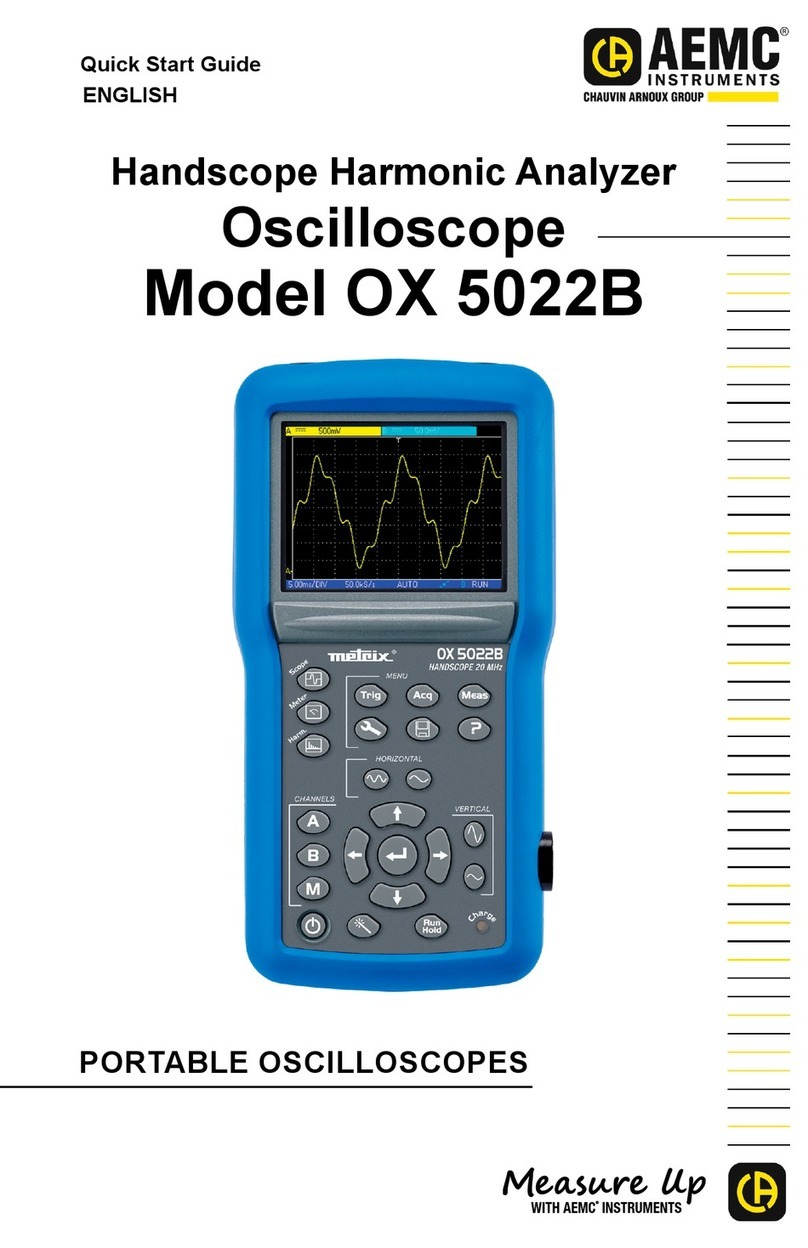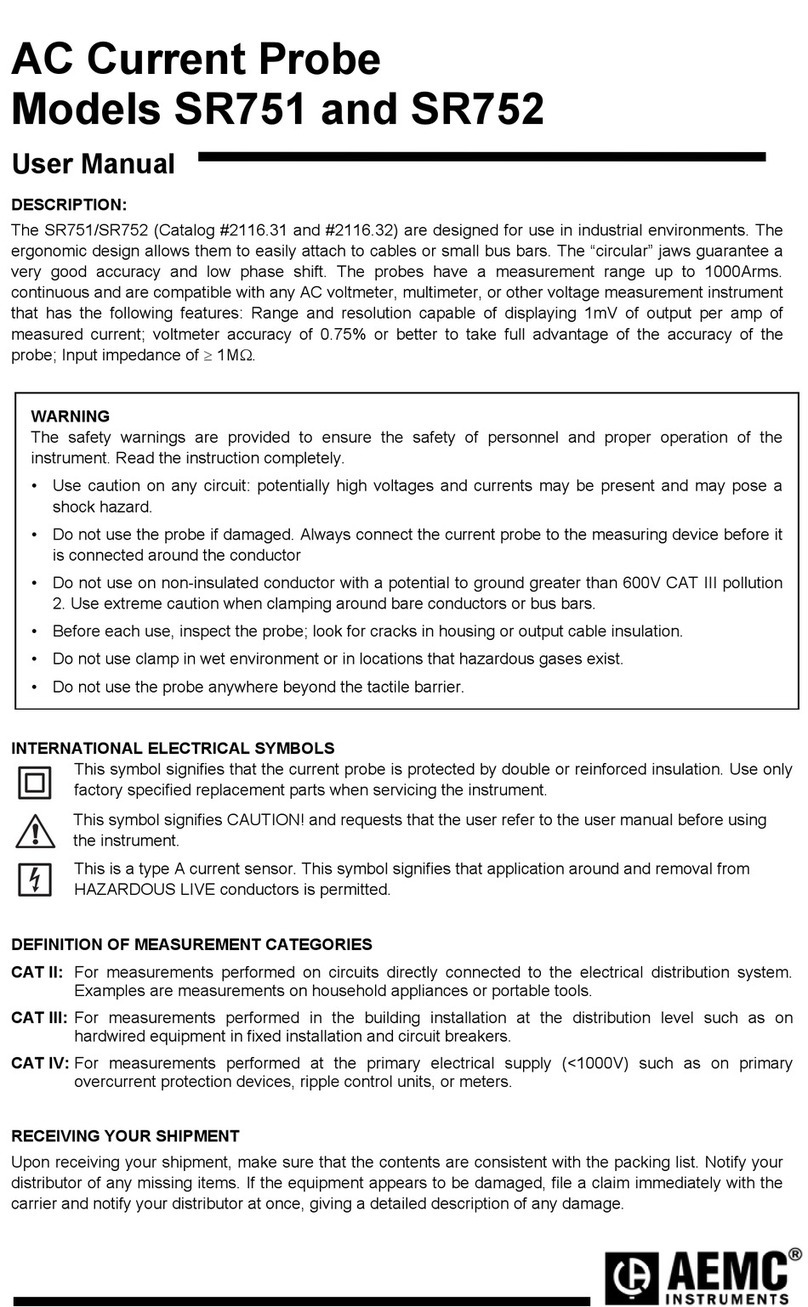
8 Digital Ground Resistance Tester Models 4620 & 4630
1.4 ORDERING INFORMATION
Ground Resistance Tester Model 4620......................................... Cat. #2130.43
Includes 8 C cell batteries and user manual.
Ground Resistance Tester Model 4620 Kit (150 ft) ...................... Cat. #2135.19
Includes ground tester, two 150 ft color-coded leads on spools (red/blue), one 30
ft lead (green), two T-shaped auxiliary ground electrodes, set of two 5 ft color-
coded (red/blue) leads, set of 5 spaded lugs, one 100 ft AEMC®tape measure, 8
C cell batteries, carrying bag, and user manual.
Ground Resistance Tester Model 4620 Kit (300 ft) ...................... Cat. #2135.20
Includes ground tester, two 300 ft color-coded leads on spools (red/blue), two
100 ft color-coded leads (hand-tied, green/black), four T-shaped auxiliary ground
electrodes, set of two 5 ft color-coded (red/blue) leads, set of 5 spaded lugs, one
100 ft AEMC®tape measure, 8 C cell batteries, carrying bag, and user manual.
Ground Resistance Tester Model 4620 Kit (500 ft) ...................... Cat. #2135.21
Includes ground tester, two 500 ft color-coded leads on spools (red/blue), two
100 ft color-coded leads (hand-tied, green/black), one 30 ft lead (green), four
T-shaped auxiliary ground electrodes, set of two 5 ft color-coded (red/blue) leads,
set of 5 spaded lugs, one 100 ft AEMC®tape measure, 8 C cell batteries, carrying
bag, and user manual.
Ground Resistance Tester Model 4630......................................... Cat. #2130.44
Includes rechargeable battery, AC power cord, and user manual.
Ground Resistance Tester Model 4630 Kit (150 ft) ...................... Cat. #2135.22
Includes ground tester, two 150 ft color-coded leads on spools (red/blue), one 30
ft lead (green), two T-shaped auxiliary ground electrodes, set of two 5 ft color-
coded (red/blue) leads, set of 5 spaded lugs, one 100 ft AEMC®tape measure,
rechargeable battery, carrying bag, and user manual.
Ground Resistance Tester Model 4630 Kit (300 ft) ...................... Cat. #2135.23
Includes ground tester, two 300 ft color-coded leads on spools (red/blue), two
100 ft color-coded leads (hand-tied, green/black), four T-shaped auxiliary ground
electrodes, set of two 5 ft color-coded (red/blue) leads, set of 5 spaded lugs,
one 100 ft AEMC®tape measure, rechargeable battery, carrying bag, and user
manual.
Ground Resistance Tester Model 4630 Kit (500 ft) ...................... Cat. #2135.24
Includes ground tester, two 500 ft color-coded leads on spools (red/blue), two
100 ft color-coded leads (hand-tied, green/black), one 30 ft lead (green), four
T-shaped auxiliary ground electrodes, set of two 5 ft color-coded (red/blue) leads,
set of 5 spaded lugs, one 100 ft AEMC®tape measure, rechargeable battery,
carrying bag, and user manual.
